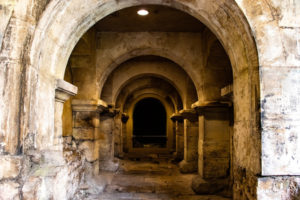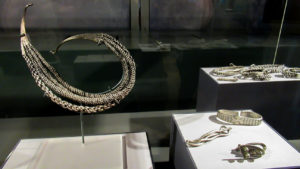Dover Castle is a medieval castle in Dover, Kent, England. It was founded in the 11th century and has been described as the “Key to England” due to its defensive significance throughout history. Some sources say it is the largest castle in England, a title also claimed by Windsor Castle.
Iron age
This site may have been fortified with earthworks in the Iron Age or earlier before the Romans invaded in AD 43. This is suggested on the basis of the unusual pattern of the earthworks which does not seem to be a perfect fit for the medieval castle. Excavations have provided evidence of Iron Age occupation within the locality of the castle, but it is not certain whether this is associated with the hillfort.
Roman era
The site also contains one of Dover’s two Roman lighthouses (or pharoses), one of only three surviving Roman-era lighthouses in the world, and the tallest and most complete standing Roman structure in England. It is also claimed to be Britain’s oldest standing building. Built in the early 2nd century, the 5-level 8-sided tower was made of layers of tufa, Kentish ragstone, and red bricks. The castle lighthouse survived after being converted into a belfry in the Saxon era (c.1000), having a new upper layer added (c.1430), and was partially renovated in 1913–1915. The scant remains of the other Roman lighthouse, known as the Bredenstone or the Devil’s Drop of Mortar, are located on the opposing Western Heights, across the town of Dover.
The Roman lighthouse at Boulogne-sur-Mer across the Channel survived for many centuries, and its light should have been visible from Dover. It was built circa 39 AD by order of Emperor Caligula, possibly in preparation for an invasion of Britain. Suetonius refers to Caligula’s “erection of a tall lighthouse, not unlike the one at Pharos, in which fires were to be kept going all night as a guide to ships”. Known as the Tour d’Ordre, coastal erosion led to it toppling into the sea in 1644. Engravings of its height may show how the Dover Roman lighthouse once looked.
Saxon and early Norman
After the Battle of Hastings in October 1066, William the Conqueror and his forces marched to Westminster Abbey for his coronation. They took a roundabout route via Romney, Dover, and Canterbury. From the Cinque Ports foundation in 1050, Dover has always been a chief member—it may also have been this that first attracted William’s attention, and got Kent the motto of Invicta.
In 1088, eight knights were appointed under tenures to guard Dover Castle, their names were: William d’Albrincis; Fulberl de Dover, William d’Arsic; Geoffrey Peverell; William Maminot; Robert du Port; Hugh Crevecoeur; and Adam Fitzwilliam.
Henry II onwards
It was during the reign of Henry II that the castle began to take a recognizable shape. The inner and outer baileys and the great keep belong to this time. Maurice the Engineer was responsible for building the keep.
In 1216, during the First Barons’ War, a group of rebel barons invited the future Louis VIII of France to come and take the English crown. He had some success breaching the walls but was ultimately unable to take the castle. The vulnerable north gate that had been breached in the siege was converted into an underground forward-defense complex (including St John’s Tower), and new gates built into the outer curtain wall on the western (Fitzwilliam’s Gate) and eastern (Constable’s Gate) sides. During the siege, the English defenders tunneled outwards and attacked the French.
During the time of Stephen de Pencester, a windmill was erected on Tower 22, which was later known as the Mill Tower.[16] By the Tudor age, the defenses themselves had been superseded by gunpowder. They were improved by Henry VIII, who made a personal visit and added to it with the Moat Bulwark.
During the English Civil War, it was held for the king but then taken by supporters of the Parliamentarians in 1642 without a shot being fired.[18] Knowing the castle was lightly guarded, a local merchant Richard Dawkes accompanied by 10 men scaled the cliffs and attacked the porter’s lodge, obtaining the keys and entering the castle before the garrison was summoned.
Dover Castle was a crucial observation point for the cross-channel sightings of the Anglo-French Survey, which used trigonometric calculations to link the Royal Greenwich Observatory with the Paris Observatory. This work was overseen by General William Roy.







